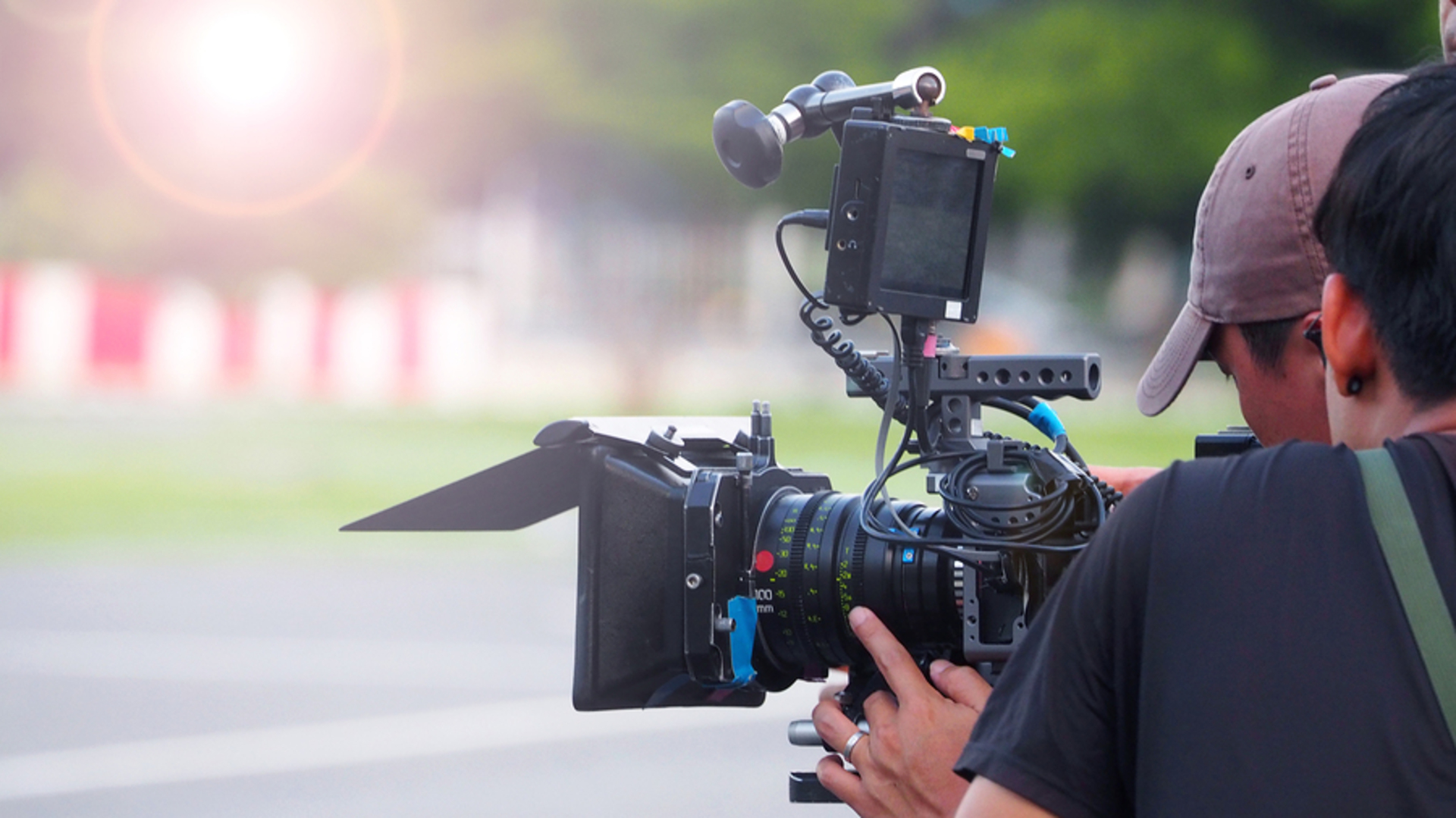Pre-Production:
Plan Ahead: Start planning well in advance to ensure a smooth production process.
Create a Detailed Script: Develop a comprehensive script outlining scenes, dialogue, and actions.
Storyboard: Create a storyboard to visualize the sequence of shots and scenes.
Scout Locations: Visit and assess potential filming locations to ensure they meet your needs. Secure Permits: Obtain any necessary permits or permissions for filming at chosen locations.
Cast Talent: Audition and select suitable actors or presenters for the project.
Assemble Crew: Hire or recruit a skilled crew including camera operators, sound technicians, and assistants.
Gather Equipment: Ensure you have all the necessary filming equipment, including cameras, lighting, and audio gear.
Plan Logistics: Arrange transportation, accommodation, and catering for the cast and crew. Conduct Rehearsals: Schedule rehearsals to familiarize the cast with their roles and the script.
Set Preparation:
Arrive Early: Arrive at the set early to allow ample time for setup and preparation.
Organize Equipment: Set up equipment and ensure everything is in working order before filming begins.
Lighting Setup: Arrange lighting to achieve the desired mood and ambiance for each scene.
Sound Check: Test audio equipment and perform sound checks to ensure clear sound quality.
Dress the Set: Arrange props, furniture, and set decorations to enhance the visual appeal of the scene.
Check Camera Settings: Adjust camera settings such as exposure, white balance, and focus for optimal image quality.
Communicate with Crew: Brief the crew on their roles and responsibilities for the shoot. Establish Safety Protocols: Identify potential hazards and establish safety protocols to ensure a safe working environment.
Create Shot Lists: Review the storyboard and create shot lists to guide the filming process. Assign Roles: Assign specific roles and tasks to crew members to ensure efficient coordination.
During Filming:
Maintain Communication: Keep communication channels open between the director, crew, and talent throughout the shoot.
Stick to Schedule: Adhere to the production schedule to stay on track and avoid delays.
Capture Multiple Takes: Record multiple takes of each scene to provide options during the editing process.
Direct Actors: Provide clear direction and guidance to actors to ensure their performances meet expectations.
Monitor Audio Levels: Continuously monitor audio levels to ensure consistent sound quality.
Adjust Lighting: Fine-tune lighting setups as needed to maintain consistent quality throughout the shoot.
Review Footage: Periodically review footage to identify any issues or adjustments that need to be made.
Stay Flexible: Be prepared to adapt to unexpected changes or challenges that arise during filming.
Take Breaks: Schedule regular breaks to allow cast and crew to rest and recharge.
Stay Hydrated: Ensure everyone stays hydrated and well-nourished throughout the shoot.
Post-Production:
Back Up Footage: Immediately back up all footage to prevent loss or corruption of files.
Organize Footage: Organize footage into folders and files for easy access during the editing process.
Transcode Footage: Convert footage to the appropriate file format for editing software.
Select Best Takes: Review footage and select the best takes for each scene to include in the final edit.
Edit Footage: Use editing software to assemble footage, add transitions, and create a cohesive narrative.
Color Grade: Adjust colors and tones to achieve a consistent and visually appealing look. Add Sound Effects: Incorporate sound effects to enhance the audio experience and immerse viewers in the scene.
Mix Audio: Balance audio levels and mix dialogue, music, and sound effects for optimal clarity and impact.
Add Music: Choose appropriate music tracks to complement the mood and tone of the video.
Add Graphics and Text: Insert graphics, text overlays, and titles to provide context and information.
Review and Revision:
Review Drafts: Share draft versions of the video with stakeholders for feedback and input. Incorporate Feedback: Incorporate feedback from stakeholders to refine and improve the final edit.
Test Playback: Test the video playback on different devices and screens to ensure compatibility and quality.
Check for Errors: Review the final edit for any errors or inconsistencies that need to be corrected.
Finalize Edit: Make final adjustments and tweaks to the edit before exporting the final version.
Export Video: Export the final video in the desired format and resolution for distribution.
Create Variations: Create different versions of the video optimized for various platforms and purposes.
Create Thumbnails: Design eye-catching thumbnails to attract viewers and encourage clicks. Create Metadata: Write compelling titles, descriptions, and tags to optimize the video for search engines and algorithms.
Share Test Links: Share test links of the final video with stakeholders for one last review before publishing.
Also Read: 67 Tips To Help You Scout A Video Production Location Effectively!
Distribution and Promotion:
Choose Platforms: Determine which platforms or channels are best suited for distributing the video.
Upload Video: Upload the video to your chosen platforms, following their specific guidelines and requirements.
Optimize SEO: Optimize video titles, descriptions, and tags for search engine optimization.
Share on Social Media: Share the video on your social media channels and encourage followers to like, comment, and share.
Promote Across Channels: Cross-promote the video across different platforms and channels to maximize exposure.
Engage with Audience: Respond to comments, questions, and feedback from viewers to foster engagement.
Run Paid Ads: Consider running paid advertising campaigns to promote the video to a targeted audience.
Feature on Website: Embed the video on your website or landing pages to increase engagement and dwell time.
Email Marketing: Include the video in email newsletters or campaigns to reach subscribers. Monitor Performance: Track key performance metrics such as views, engagement, and conversions to evaluate the video’s effectiveness.
Collaboration and Communication:
Maintain Collaboration: Keep lines of communication open between team members to ensure everyone is aligned.
Provide Clear Direction: Provide clear direction and guidance to the cast and crew to ensure a cohesive vision.
Encourage Creativity: Foster a collaborative environment where team members feel comfortable sharing ideas and suggestions.
Address Concerns Promptly: Address any concerns or issues raised by team members promptly and effectively.
Celebrate Achievements: Recognize and celebrate the achievements and contributions of team members throughout the production process.
Technical Considerations:
Choose the Right Equipment: Select equipment that meets the technical requirements and demands of the project.
Calibrate Equipment: Calibrate cameras, monitors, and other equipment to ensure accurate color representation and consistency.
Monitor Battery Levels: Keep track of battery levels and have backup batteries on hand to avoid interruptions.
Monitor Storage Space: Monitor available storage space on memory cards and hard drives to prevent running out of space.
Monitor Temperature: Monitor ambient temperature and humidity levels to ensure optimal performance of equipment.
Use External Microphones: Use external microphones whenever possible to capture clear, high-quality audio.
Use Tripods and Stabilizers: Use tripods and stabilizers to ensure steady shots and smooth camera movements.
Monitor Focus: Monitor focus during filming to ensure subjects remain sharp and in focus.
Monitor Exposure: Monitor exposure levels to prevent overexposed or underexposed footage.
Monitor White Balance: Monitor white balance settings to ensure accurate color reproduction in different lighting conditions.
Creative Considerations:
Stay True to the Vision: Stay true to the original vision and objectives of the project throughout the production process.
Experiment with Angles: Experiment with different camera angles and perspectives to add visual interest.
Experiment with Lighting: Experiment with different lighting setups and techniques to create mood and atmosphere.
Experiment with Sound: Experiment with different sound effects and techniques to enhance the audio experience.
Be Open to Feedback: Be open to feedback and suggestions from team members and stakeholders to improve the final product.
Production Management:
Delegate Responsibilities: Delegate specific tasks and responsibilities to team members to ensure efficient workflow.
Stay Organized: Stay organized and keep track of schedules, shot lists, and production documents.
Manage Time Effectively: Manage time effectively to ensure that each scene is captured within the allotted timeframe.
Anticipate Challenges: Anticipate potential challenges and have contingency plans in place to address them.
Stay Flexible: Be flexible and adaptable to changes and adjustments that may arise during production.
Collaboration and Communication:
Maintain Collaboration: Keep lines of communication open between team members to ensure everyone is aligned.
Provide Clear Direction: Provide clear direction and guidance to the cast and crew to ensure a cohesive vision.
Encourage Creativity: Foster a collaborative environment where team members feel comfortable sharing ideas and suggestions.
Address Concerns Promptly: Address any concerns or issues raised by team members promptly and effectively.
Celebrate Achievements: Recognize and celebrate the achievements and contributions of team members throughout the production process.
Post-Production:
Stick to Deadlines: Adhere to post-production timelines and deadlines to ensure timely delivery of the final product.
Collaborate Effectively: Collaborate with editors, sound designers, and other post-production team members to achieve the desired result.
Review Drafts: Review draft versions of the video and provide feedback for revisions and adjustments.
Fine-Tune Edit: Fine-tune the edit to ensure that pacing, transitions, and visual effects are seamless and polished.
Test Playback: Test the final version of the video on different devices and screens to ensure compatibility and quality.
Address Feedback: Address any feedback or revisions requested by stakeholders to finalize the video.
Export and Distribute: Export the final version of the video and distribute it through appropriate channels.
Track Performance: Monitor key performance metrics such as views, engagement, and conversions to evaluate the video’s effectiveness.
Seek Feedback: Solicit feedback from viewers and stakeholders to identify areas for improvement in future productions.
Celebrate Success: Celebrate the successful completion of the video production project with the cast and crew, and reflect on lessons learned for future projects.
These tips should help you plan, execute, and deliver a high-quality video production that meets your objectives and exceeds expectations.



